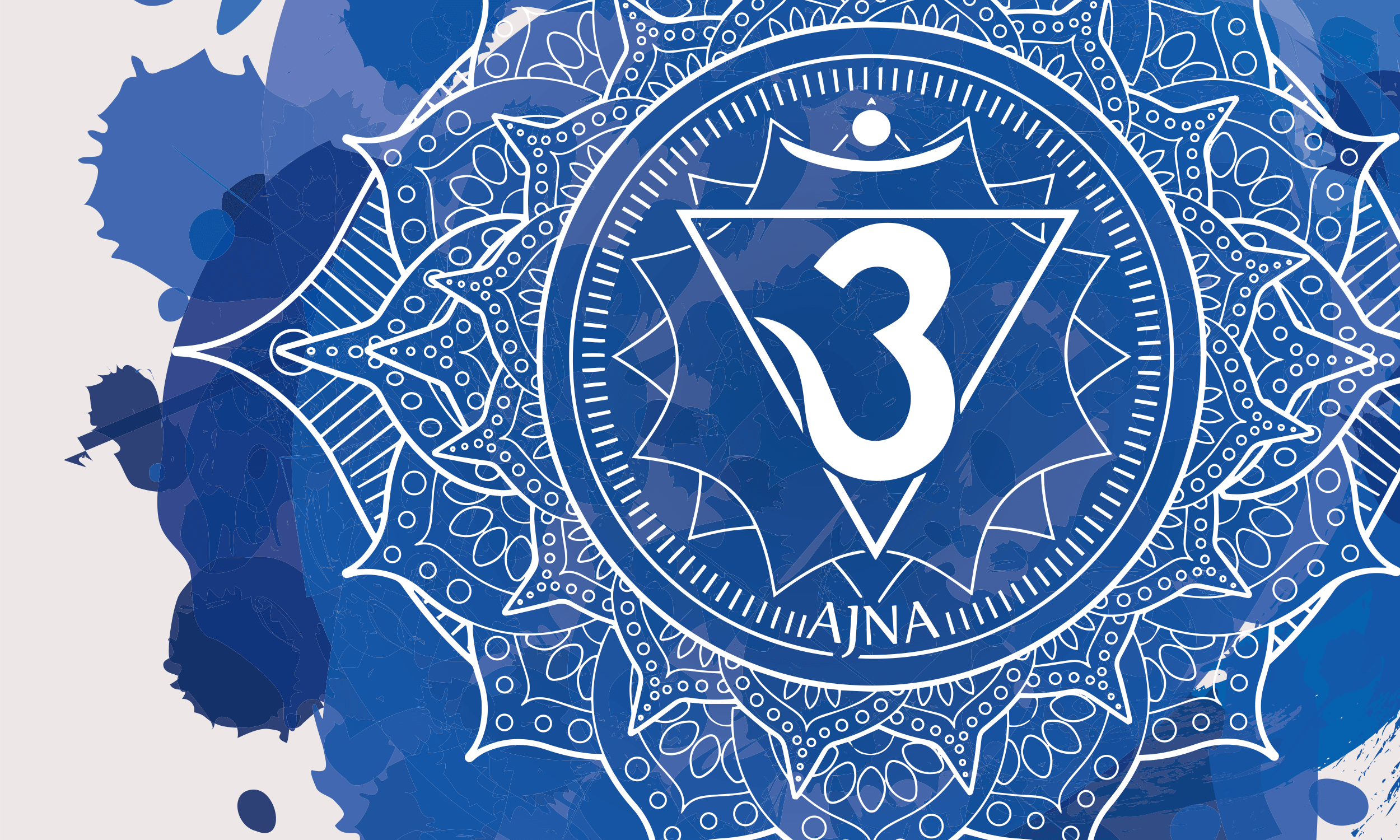I see
Sight. Pure Reality. Intuition. Insight.
Ajna, which translates to “to command” or “to perceive,” is often viewed as the controlling hub for all the other chakras and systems within the body.

Ajna, which translates to “to command” or “to perceive,” is often viewed as the controlling hub for all the other chakras and systems within the body.
Positioned directly in the middle of your forehead, this chakra governs intuition, your life’s direction, and your sense of purpose. Physically, it supports the upper frontal sinuses, eyes, and the brain’s outer layers. It is connected with inner vision or clairvoyance, a harmonious balance of mind and body, and intuition, and is linked to the pineal gland, which oversees the body’s biorhythms, such as our sleep and wake cycles. A well-balanced third eye chakra enables us to have clear sight, concentrate effectively, trust our intuition, and maintain an enthusiasm for learning and continual growth.
The circle in its symbol represents Shiva, signifying the divine masculine, while the triangle is a representation of Shakti, symbolizing the divine feminine. The two petals correspond to the sun and moon, as well as the Ida and Pingala Nadis. Moreover, the symbol’s two petals and the circle are indicative of the three gunas or states of being. These include rajas, symbolized by one petal representing fire or activity, tamas, symbolized by the other petal representing water or inertia, and sattva, symbolized by the circle for balance, peace, or light.
Color:
Note:
Glands:
Mudras:
Element:
Obstacle:
Sense:
Physical Symptoms:
Emotional Symptoms:
Mental Symptoms:
Spiritual Symptoms:
Associated With:
Chakra Development:
When Balanced:
When Underactive:
When Overactive:
Causes of Blocks:
Chakra Traumas:
To learn more about open, closed, and blocked Chakra states, check out our Chakra Overview post: Understanding the Chakra System: A Comprehensive Overview.
Leave a Reply